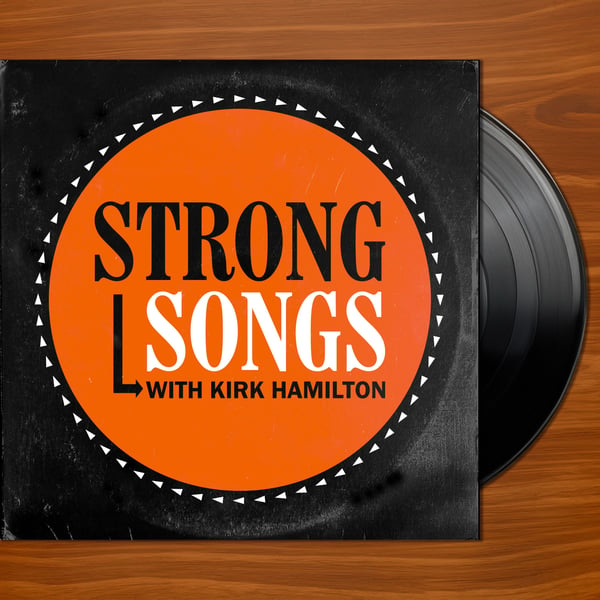"Kiss" by Prince
Strong Songs
Kirk Hamilton
4.9 • 2.1K Ratings
🗓️ 24 June 2020
⏱️ 57 minutes
🧾️ Download transcript
Summary
Transcript
Click on a timestamp to play from that location
| 0:16.0 | In the recording studio, reverb is used to refer to the sound of the space that an instrument or musical sound is in. You can create natural reverb by, say, going and recording in the middle of a canyon, |
| 0:20.0 | or you can simulate reverb using a digital or analog effect. A signal with no |
| 0:24.3 | reverb is called a dry signal and when there's a ton of |
| 0:27.4 | reverb, sometimes they call it drenched. reached. And the Welcome to Strong Songs, a Podcasts, a Podcasts, about Music. I'm your host Kirk Hamilton Hamilton and as always I'm so glad that you |
| 1:03.9 | join me to talk about re-verbed drenched recordings, totally dry recordings, and |
| 1:08.1 | recordings that fall somewhere in between. We've got an almost entirely dry recording to talk about on this |
| 1:14.2 | episode and I'm very excited to get into it so find a comfortable place to sit, |
| 1:18.2 | turn up the volume, and enjoy the show. |
| 1:28.0 | Reverb is a really important part of making a record or at least it usually is, but it can be a hard thing to get your head around and if you're just getting into audio production |
| 1:32.0 | it's very easy to go |
| 1:33.9 | astray. Reverb can make a lot of instruments sound better especially vocals I |
| 1:38.2 | know a lot of vocalists who when they record in the studio like to have a |
| 1:41.2 | little bit of reverb in the cans with them just so that they have the feel of the room and they're not singing in a totally dry space. |
| 1:48.0 | But it is very easy to go overboard with reverb and if you've got a ton of re on Everything, and more particularly if you have a bunch of different kinds of Reverb on everything, it can sort of just make your mix muddy and make everything sound kind of indistinct. |
| 2:00.0 | It's very easy to go overboard with Reverb, and I know that because I am someone who has done it plenty of times. |
| 2:06.5 | So welcome back to the show. I'm glad that you are all here. I hope you enjoyed the most recent |
| 2:10.4 | Q&A episode, and as always, you can send me questions for future Q&A episode and as always you can send me questions for future |
| 2:14.3 | Q&A episodes at listeners at Strong Songs Podcast.com. Also I hope some of you |
| 2:19.4 | downloaded the Outro Music to try your own Outro Solos. I realized that I didn't initially put a chart on that, but there is now a chart linked in the sound cloud file and you can just download that right through sound cloud if you want to try playing along. And yeah, if you do wind up making a recording playing an outro solo, I would love to hear it so feel free to send it to me |
| 2:36.7 | listeners at strong songs podcast is fine for that as well I have been practicing a lot of |
| 2:42.0 | guitar lately I mentioned on the Q&A episode that I tend to kind of spend larger blocks of time, |
| 2:47.0 | maybe a month or two on each of the instruments that I'm trying to learn, you know, non saxophone instruments basically, and it's been |
... |
Please login to see the full transcript.
Disclaimer: The podcast and artwork embedded on this page are from Kirk Hamilton, and are the property of its owner and not affiliated with or endorsed by Tapesearch.
Generated transcripts are the property of Kirk Hamilton and are distributed freely under the Fair Use doctrine. Transcripts generated by Tapesearch are not guaranteed to be accurate.
Copyright © Tapesearch 2025.

